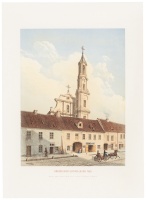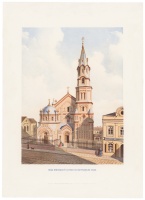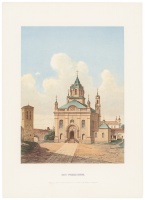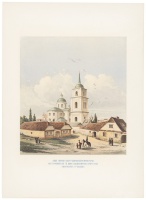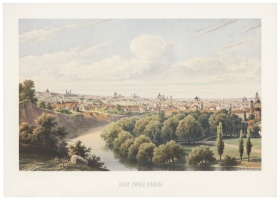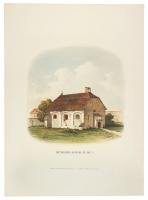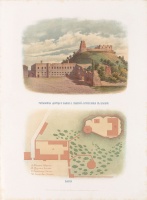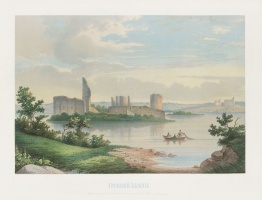
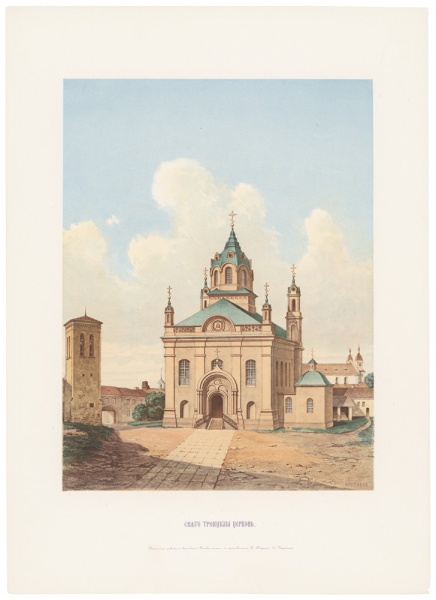

The Church of the Holy Trinity
| Authors: |
Ivan Trutnev (1827–1912) Pompei Batyushkov (1811–1892) |
| Created: | 1874 |
| Material: | paper |
| Technique: | chromolithograph |
| Dimensions: | 55 × 40.50 cm |
| Signature: | inscription: СвятоТроицкaя церковь. / Печатное заведение красками Винкельмана с сыновьями Х. Порт в Берлине / ТРУТНЕВ |
Pompey Batyushkov, ‘Old Russian Monuments in the Western Provinces’, 1874.
According to a legend, Holy Trinity Hill in Vilnius was the place where three Lithua nian martyrs, John, Anthony and Eustace, were martyred. A wooden church was built there in memory of them by Juliana, the wife of Grand Duke Algirdas; and in 1514, Konstanty Ostrogsky, the Grand Hetman of the Grand Duchy of Lithuania and Castellan of Vilnius, who supported the Orthodox faith, replaced it with a brick church. The Uniates took it over in 1607, and founded the Basilian monastery, which became the centre of the Uniate Church and the province of the Basilian Holy Trinity. The Vilnius architect Johann Christoph Glaubitz rebuilt it after a fire in 1760, with Baroque towers at the four corners (only those on the east wall have survived). After the suppression of the Uniate faith, the building was taken over by the Orthodox Church in 1821, and a wooden Byzantine dome and two towers on the west façade were built, designed by the architect Nikolai Chagin.
Text author Laima Laučkaitė
Source: Law firm Valiunas Ellex art album VILNIUS. TOPOPHILIA II (2015). Compiler and author Laima LaučkaitėExpositions: “Vilnius. Topophilia. Views of Vilnius from the collection of the law firm Ellex Valiunas”, 5 October – 26 November 2017, National Gallery of Art, Vilnius (curator Laima Laučkaitė). ‘Vilnius Forever. A Dialogue of Artworks and Guides to the City’, 25 May 2022 – 30 April 2023 Lithuanian Art Centre TARTLE (Užupio St. 40, Vilnius). Curator Laima Laučkaitė.







